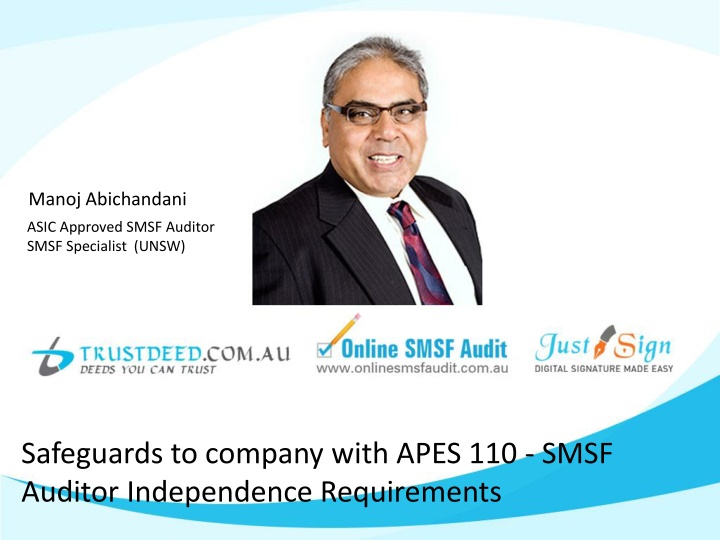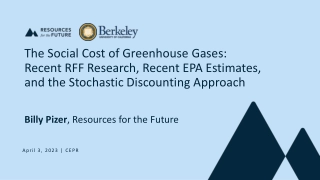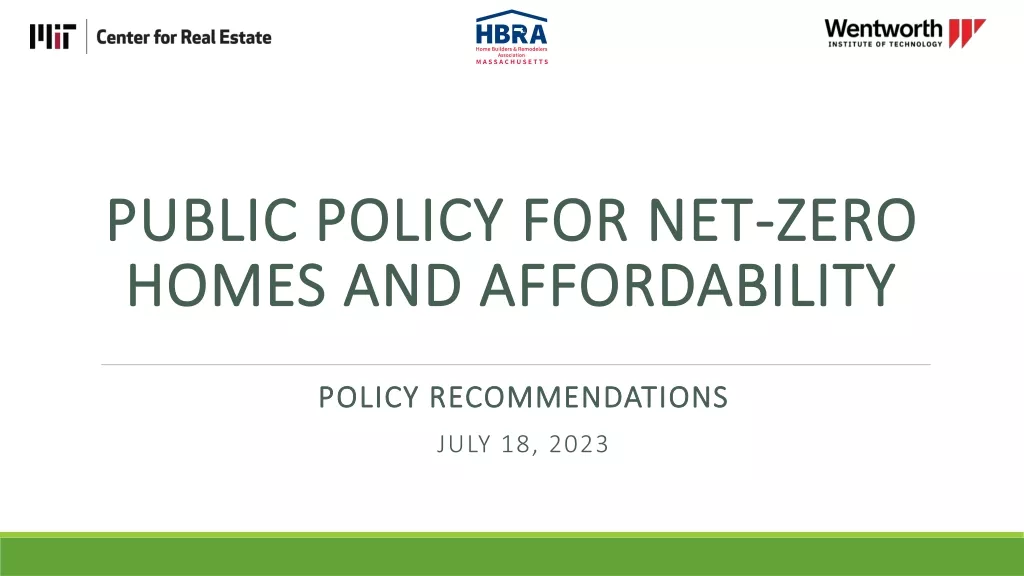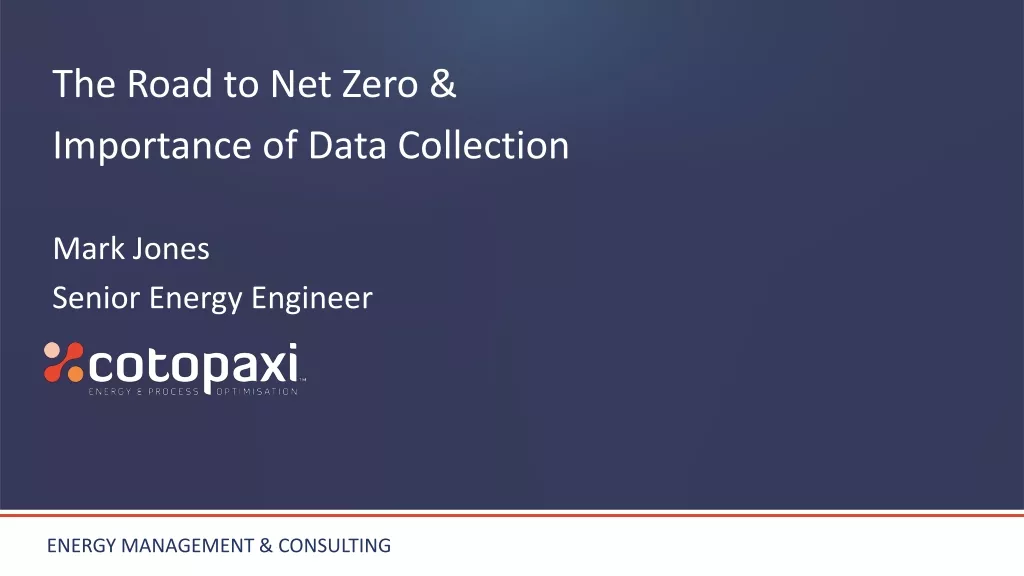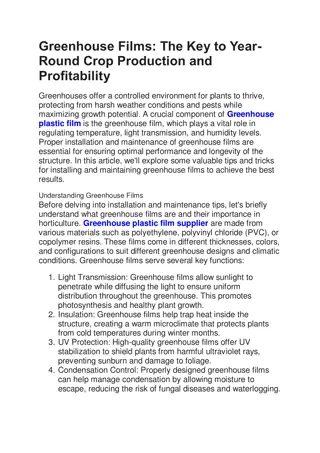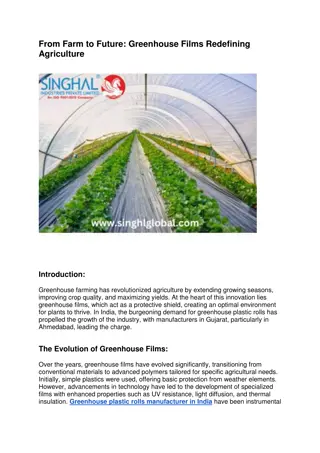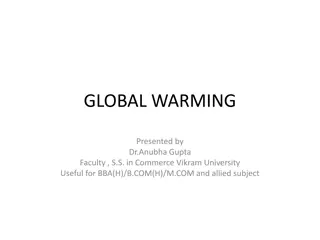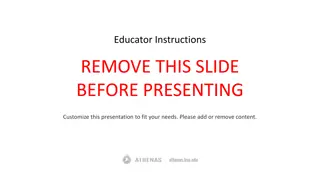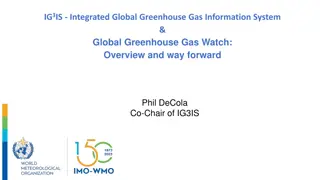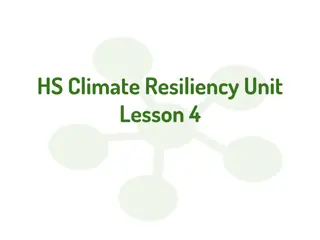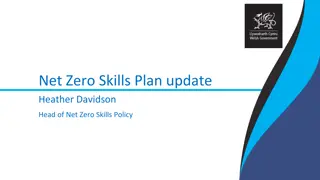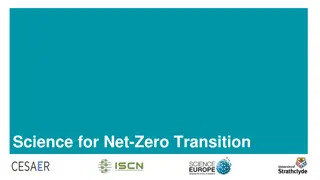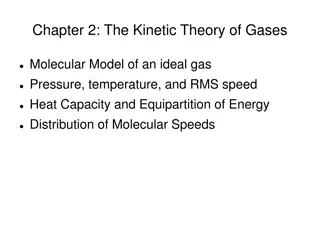Net Zero: Removing Greenhouse Gases
Ways to achieve net zero emissions by removing greenhouse gases from the atmosphere include forest management, peatlands preservation, enhancing soil carbon storage, using wood in construction, bioenergy with carbon capture, and direct air capture. Experts provide insights on differing views and implications for decision-making.
Download Presentation

Please find below an Image/Link to download the presentation.
The content on the website is provided AS IS for your information and personal use only. It may not be sold, licensed, or shared on other websites without obtaining consent from the author.If you encounter any issues during the download, it is possible that the publisher has removed the file from their server.
You are allowed to download the files provided on this website for personal or commercial use, subject to the condition that they are used lawfully. All files are the property of their respective owners.
The content on the website is provided AS IS for your information and personal use only. It may not be sold, licensed, or shared on other websites without obtaining consent from the author.
E N D
Presentation Transcript
Manoj Abichandani ASIC Approved SMSF Auditor SMSF Specialist (UNSW) Safeguards to company with APES 110 - SMSF Auditor Independence Requirements
House Keeping - Audio If Computer sound is not audio able 1. Phone the number on your panel 2. Enter Access Code
House Keeping Hand Out Copy of this Presentation can be downloaded From the Panel
House Keeping Questions on this Presentation If you have any Questions on this Presentation 1. Type in your questions in the panel 2. Speaker will answer all your questions after the presentation
Disclaimer of Legal & Financial Advice Educational Purpose Only Statement This paper represents the opinion of the author (s) and not necessarily those of Deed Dot Com Dot Au Pty Ltd. The contents are for general information only. They are not intended as professional advice - for that you should consult a Accountant or other suitably qualified professional. Deed Dot Com dot Au Pty Ltd expressly disclaims all liability for any loss or damage arising from reliance upon any information in this presentation. Disclaimer The information contained in this presentation is based on the understanding of the author has of the relevant Australian laws as at 16th March 2021. As these laws are subject to change you should refer to ATO s website or talk to a professional adviser for the most up-to-date information. The information is for adviser use only and is not a substitute for investors seeking advice. While all care has been taken in the preparation of this document (using sources believed to be reliable and accurate), no person, including Deed Dot Com Dot Au Pty Ltd, accepts responsibility for any loss suffered by any person arising from reliance on this information. This update is not financial product advice and does not take into account any individual s objectives, financial situation or needs. Any examples are for illustrative purposes only and actual risks and benefits will vary depending on each investor s individual circumstances. You should form your own opinion and take your own legal, taxation and financial advice on the application of the information to your business and your clients.
AGENDA Auditing Standards & Legislation behind Auditor independence How to test your own Independence How to apply for Safeguards to remain independent
Auditing Standard on Independence
AUSB - ASA 220 Independence Para 11 Quality Control for an Audit of a Financial Report and Other Historical Financial Information The engagement partner shall form a conclusion on compliance with independence requirements that apply to the audit engagement. In doing so, the engagement partner shall (a) Obtain relevant information from the firm and, where applicable, network firms, to identify and evaluate threats to independence; (b) Evaluate information on identified breaches, if any, of the firm s independence policies and procedures to determine whether they create a threat to independence for the audit engagement; (c) Evaluate whether the identified threats are at an acceptable level; and (d) Take appropriate action to address the threats that are not at an acceptable level by eliminating the circumstances that create the threats, applying safeguards to reduce threats to an acceptable level, or withdrawing from the audit engagement, where withdrawal is possible under applicable law or regulation. The engagement partner shall promptly report to the firm any inability to resolve the matter for appropriate action.
Apply Safeguards withdrawing from the audit engagement Their own or an immediate family member s SMSF (paras R510.4, R521.5 and R523.3); Where a partner within their own firm is a member/trustee of that SMSF (para R523.3) Where they have a business relationship with a member/trustee of the SMSF (para 520.3 A1 to 520.4 A1) Where a relative or a related party of the auditor is a member/ trustee of that SMSF or where the auditor has a close personal relationship (paras 521.3 A1 to 521.7 A3) Where an audit team member on the audit of a SMSF has a close family member (parent, child or sibling who is not an immediate family member) that is a member and trustee of that SMSF a reasonable and informed third party would likely conclude that a self- interest threat to independence is not an acceptable level and must be addressed (paras 510.10 A5 to 510.10 A8
APES 110 Code of Professional Ethics For Accountants By Professional Bodies
Purpose of the Code 1. The Code of Ethics for Professional Accountants (including Independence Standards) ( the Code ) sets out fundamental principles of ethics for Members, reflecting the profession s recognition of its public interest responsibility. These principles establish the standard of behaviour expected of a Member. The fundamental principles are: integrity, objectivity, professional competence and due care, confidentiality, and professional behaviour. 2. The Code provides a conceptual framework that Members are to apply in order to identify, evaluate and address threats to compliance with the fundamental principles. The Code sets out requirements and application material on various topics to help Members apply the conceptual framework to those topics. 3. In the case of Audits, Reviews and other assurance engagements, the Code sets out Independence Standards, established by the application of the conceptual framework to threats to Independence in relation to these engagements.
APES 110 Section 120 When assessing independence, the auditor: (a) identifies any threats to compliance with the fundamental principles (and independence); (b) evaluates whether the identified threats are at an acceptable level; and (c) addresses any identified threats that are not at an acceptable level by (i) eliminating the circumstances, including interests or relationships, that are creating the threats; (ii) applying safeguards where available and capable of being applied, to reduce the threats to an acceptable level; or (iii) declining or ending the engagement.
APES 110 Section 120 Identifying threats to the fundamental principles of independence requires an understanding by the auditor of the facts and circumstances (including any professional activities, interests and relationships) that might compromise compliance with the fundamental principles. Threats will fall into one or more of the following categories: (a) Self-interest threat; (b) Self-review threat; (c) Advocacy threat; (d) Familiarity threat; and (e) Intimidation threat.
Threats to Independence Self Review Self Interest Intimidation Familiarity Threats may exist that the auditor may not appropriately evaluate the results of previous judgements made, or advice provided, to clients of the firm when the auditor was a partner of the firm. Will inappropriately influence their judgement or behaviour. For example, the auditor may be reluctant to issue an adverse finding for fear of losing this referral source Will be deterred from acting objectively because of actual or perceived pressures from the referral source Auditor may be too accepting of the work of the firm they previously worked at Where minimal time has passed since the auditor was a partner of the firm
Legislation behind SMSF Auditor independence
SIS Act - Section 128F(d) SIS Regulations Reg 9A.06 SISA 128F (d) comply with the auditor independence requirements prescribed by the regulations SISR 9A.06 Auditor independence requirements For paragraph 128F(d) of the Act, the auditor independence requirements produced by the Accounting Professional and Ethical Standards Board Limited and set out in the APES 110 Code of Ethics for Professional Accountants (including Independence Standards) are prescribed for all approved SMSF auditors.
NEW APES 110 RULES Audit Firm shall not assume a management responsibility for an audit client (Para R600.7)
Firms or network firms must not assume financial preparation responsibility for an audit client Where responsibility statements for a SMSF then the service would not be routine or mechanical an accountant for the assumes preparation management of financial Self-review threat which arises, were that same firm to undertake an audit of those financial statements, would be so great that no safeguard could reduce the threat to an acceptable level. Firm or Networking firms must resign as an Auditor of SMSF
Staff member within an Audit Firm prepares financial statements Self Review No Safeguards Action Auditor will not evaluate the results of judgements made by that staff member Firm would not be able to put appropriate safeguards in place to reduce the threat to an acceptable level, as all of their staff are essentially reporting to them The auditor must decline the audits for their SMSF clients
Trustee prepared Trial Balance Accounting firm acts as Tax Agent Only Action Self Review If the accounting firm prepares tax calculations of current and deferred tax liabilities (or assets) that are material to the financial statements, the auditor may not be able to eliminate the circumstances creating the threats to independence. Will not generally create a self-review threat. Tax calculations could create a self-review threat
Where the auditor was previously a Partner or employee of the firm Action Familiarity Time Self Review Where minimal time has passed since the auditor was at the firm, a reasonable and informed third party would likely assess that threats to independence would not be at an acceptable level Auditor may be too accepting of the work of the firm they previously worked at Threats may exist that the auditor may not appropriately evaluate the results of previous judgements made, or advice provided, to clients of the firm when the auditor was a partner of the firm. ATO = At least +2 years have passed Where minimal time has passed since the auditor was a partner of the firm
Test your own Independence
Reciprocal Arrangements / Auditor Pool Firm A :SMSF Admin & Audit Firm B :SMSF Admin & Audit
Reciprocal Arrangements / Auditor Pool Self Interest Familiarity Intimidation Member A may be less likely to issue adverse findings about Member B s SMSF in fear that Member B may subsequently issue adverse findings on A s SMSF Threat that each auditor will be sympathetic to the other s interests or too accepting of each other s work one auditor may exercise undue influence on the other auditor not to issue an adverse finding.
Relationships between auditors & Referral sources (SMSF Administrators) Auditing multiple SMSF clients of an administration firm Auditor conducting SMSF audits for an accounting firm where the principal is related to the auditor Reciprocal auditing arrangements relating to auditors who audit each other s fund and auditors auditing each other s SMSF clients Concentration of referral sources not more than 20% from one source
Significant fee from one referral Source Self Interest Intimidation Action Solution Will Will be deterred from acting objectively because of actual or perceived pressures from the referral source Where a large proportion of an auditor s fees comes from one referral source -20%, the auditor must evaluate the significance of the threat and apply safeguards when necessary to eliminate the threat or reduce it to an acceptable level (para AUST R410.3.1) Get more clients / Appoint a reviewer inappropriately influence their judgement or behaviour. For example, the auditor may be reluctant to issue an adverse finding for fear of losing this referral source No Solution Decline if safeguard is not possible
More than 20% coming from one source SMSF Audits 400 Funds SMSF Administrators SMSF Auditor Currently Auditing 200 Funds Intimidation Will be deterred from acting objectively because of actual or perceived pressures from the referral source
How much fee is OK from one referral source Action Where a large proportion of an auditor s fees comes from one referral source, the auditor must evaluate the significance of the threat and apply safeguards when necessary to eliminate the threat or reduce it to an acceptable level (para AUST R410.3.1)
Fee Dependency Risk 15% 20% 30% Potential threats to audit clients that are public interest entities (PIEs) International Ethics Standards Board for Accountants (IESBA) non-PIEs May expose the firm to a significant business risk if the client is lost (R410.4 of APES 110), IESB Fees Exposure Draft (APESB) recommended removing the proposed threshold for non-PIE audit clients and replacing it with the same threshold as PIEs (15%).
Safeguard when accepting a new business Audit Firm auditing 2000 can absorb another 400 Funds = Total $2400 New Funds 400/2400 = 16.66% SMSF Auditor 1 SMSF Auditor Currently Auditing 2000 Funds 10 Firms SMSF Auditor 2 New Business SMSF Audits - 400 Funds SMSF Audit Firm SMSF Administrator
Does not make the mark 33% SMSF Admin Firm SMSF Audits 33% SMSF Admin Firm SMSF Auditor SMSF Admin Firm
Introducing SMSF Auditors Hub WWW.smsfauditorshub.com.au
Future of SMSF Audits One Mega Audit Firm Admin Co. 1 Admin Co. 2 Admin Co. 3 Admin Co. 4 Admin Co. 5 Auditor 1 Auditor 2 Auditor 3 Auditor 4 Auditor 5
SMSF Auditors Hub Over 40 Auditors SMSF Admin Firm SMSF Admin Firm SMSF Admin Firm SMSF Admin Firm SMSF Admin Firm SMSF Auditor SMSF Auditor SMSF Auditor SMSF Auditor SMSF Auditor
Benefits of using - SMSF Auditors Hub 1) It does not matter who is the auditor the fund gets audited Fast ! 2) There is one price Its certain what you will pay 3) Top Quality Audit on an online platform which meets and exceed legislative and proven ATO requirements 4) 10 Days guarantee - Quick 5) Full team Auditors & Staff members already in place 6) Online upload of documents Download of Audit Reports 7) Clients can also upload documents for Accounting purposes
Why choose SMSF Auditors Hub 8) Experience & Expertise across a wide variety of funds and contemporary best practice 9) Scale to develop efficient systems and processes using our online audit software and pre made templates or audit reports etc. 10) Our audit capacity 10,000 - 20,000 audits a year so are not reliant on a small group of people 11) Strong understanding of the admin platform and strong relationships with the admin system providers 12) Efficient communication platform between all parties so dealing with queries is smoother on both ends 13) Online Platform free for SMSF Administrators
Any Questions ?? Manoj Abichandani ASIC Approved SMSF Auditor SMSF Specialist (UNSW)
For further Enquires please visit our websites: www.trustdeed.com.au www.onlinesmsfaudit.com.au www.justsign.com.au and chat with our agent. Alternatively, you - contact us 0296844199 or Email us at sales@trustdeed.com.au sales@onlinesmsfaudit.com.au sales@justsign.com.au
